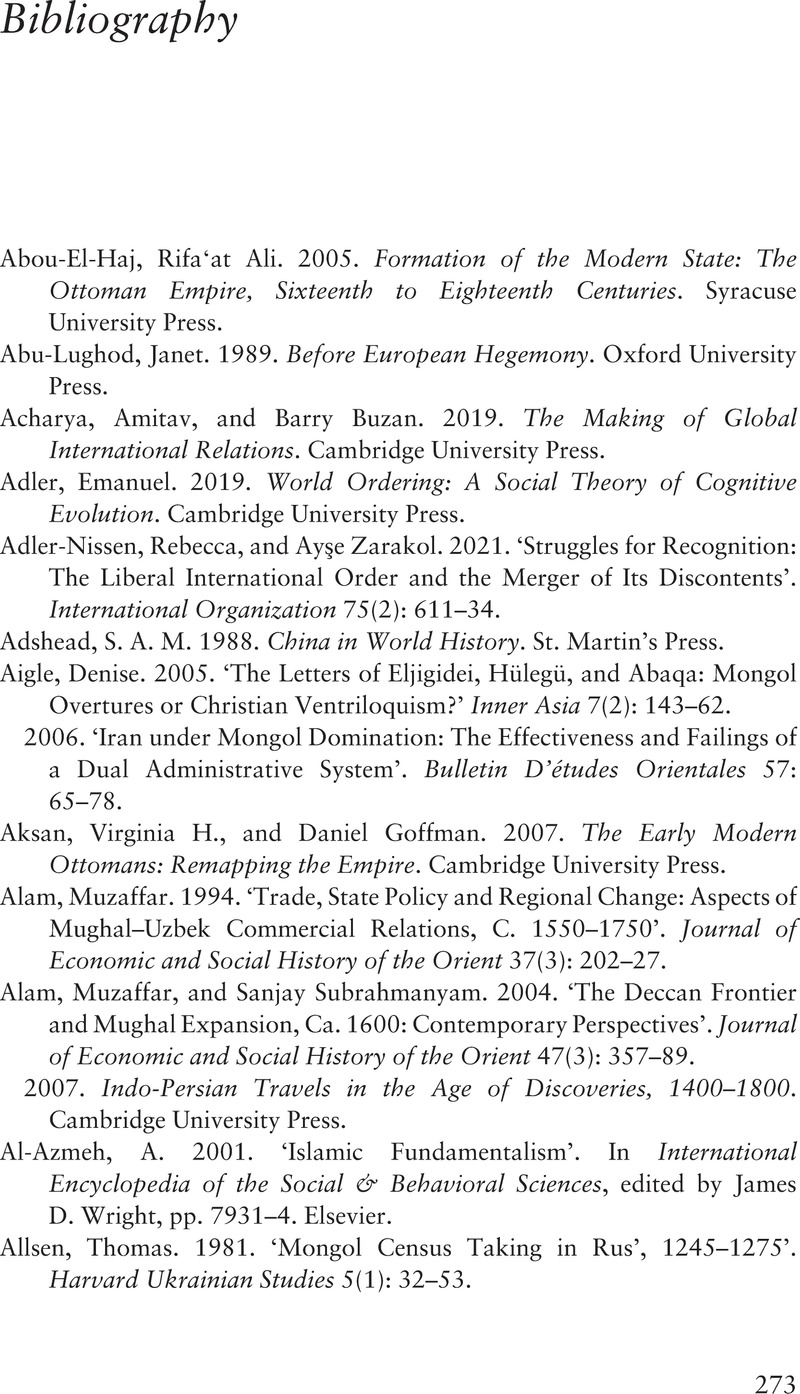Bibliography
Published online by Cambridge University Press: 24 February 2022
Summary

- Type
- Chapter
- Information
- Before the WestThe Rise and Fall of Eastern World Orders, pp. 273 - 301Publisher: Cambridge University PressPrint publication year: 2022

